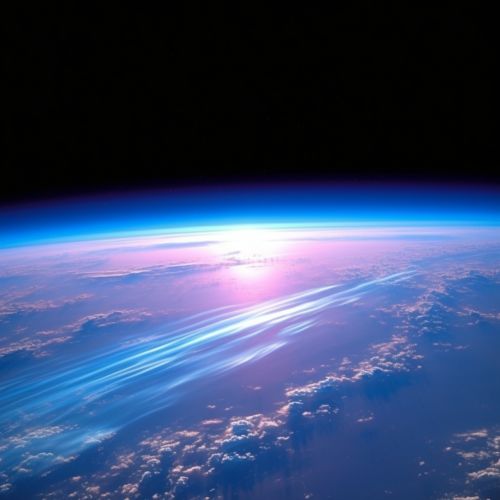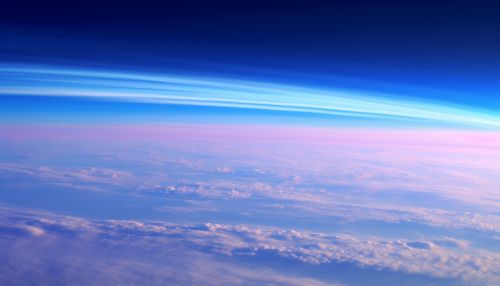Ozone-Oxygen Cycle
Introduction
The Ozone-Oxygen Cycle is a critical process that occurs in the Earth's stratosphere, involving the continuous creation and destruction of ozone molecules. This cycle plays a vital role in absorbing most of the Sun's harmful ultraviolet (UV) radiation, thereby protecting life on Earth.
Ozone Formation
The ozone-oxygen cycle begins with the formation of ozone. This process involves diatomic oxygen molecules (O2) being dissociated by solar UV-C radiation into individual oxygen atoms. These free oxygen atoms can then combine with other oxygen molecules to form ozone (O3). The reaction can be represented as follows:
O2 + UV-C -> 2O
O + O2 -> O3
It's important to note that this process is dependent on the presence of UV-C radiation, which has a wavelength of 100-280 nanometers.
Ozone Destruction
The destruction of ozone occurs when an ozone molecule absorbs UV-C or UV-B radiation, causing it to dissociate into a molecule of oxygen and an oxygen atom. Alternatively, ozone can be destroyed through reactions with various atmospheric constituents such as hydroxyl (OH), nitric oxide (NO), and atomic chlorine (Cl) and bromine (Br). The reactions can be represented as follows:
O3 + UV-C/UV-B -> O2 + O
O3 + OH/NO/Cl/Br -> products
The destruction of ozone by these constituents is a major concern as it leads to the formation of the ozone hole.
Ozone-Oxygen Equilibrium
In the stratosphere, there is a dynamic equilibrium between the formation and destruction of ozone, known as the ozone-oxygen cycle. This equilibrium ensures that a relatively stable amount of ozone is maintained in the stratosphere, allowing it to effectively absorb the majority of the Sun's harmful UV radiation.
However, this equilibrium can be disrupted by various factors, including increases in the emissions of ozone-depleting substances (ODS) such as chlorofluorocarbons (CFCs), halons, carbon tetrachloride, and methyl chloroform. These substances can catalyze the destruction of ozone, leading to the depletion of the ozone layer.
Impact on Climate
The ozone-oxygen cycle also has significant implications for the Earth's climate. The absorption of UV radiation by ozone results in the heating of the stratosphere. This heating influences atmospheric circulation patterns and affects weather and climate conditions.
Moreover, changes in the ozone layer can influence the distribution of solar energy in the Earth's atmosphere, thereby affecting climate patterns. For instance, the depletion of the ozone layer can lead to cooling of the stratosphere, which can have various effects on the Earth's climate system.
Conclusion
The ozone-oxygen cycle is a crucial atmospheric process that plays a vital role in protecting life on Earth from harmful UV radiation. Understanding this cycle is essential for monitoring and predicting changes in the ozone layer and for developing strategies to protect this critical component of the Earth's atmosphere.


